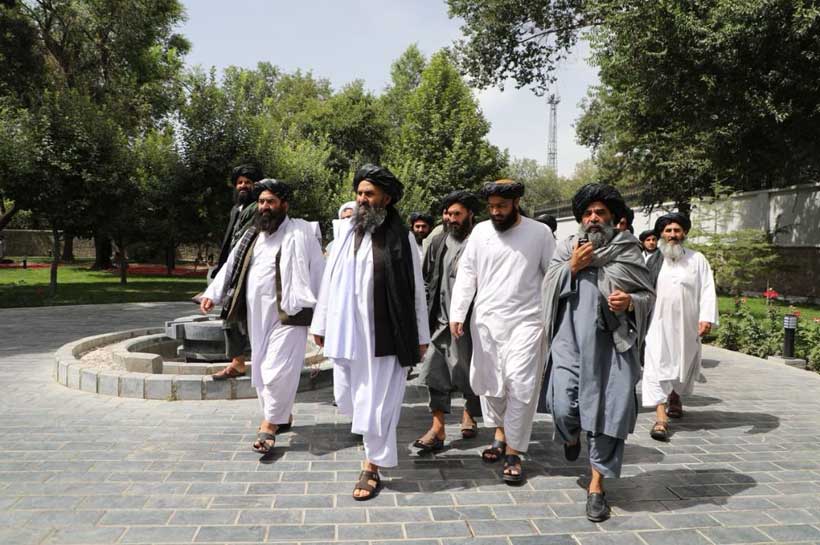The instability of Afghanistan has again become the focus of the international discourse not as the local issue but as a global crisis on the rise. In fact, the Afghan Taliban regained power in 2021. Since then, the nation has steadily fallen into unrestrained anarchy that provides a breeding ground for extremist organizations, drug dealers, and systematic violators of human rights. It is not a plunge into Kabul or Kandahar alone, but it pours beyond borders and influences regional games and even surpasses continent. It is now time that the world recognizes that the crisis that plagues Afghanistan is a security issue of a global nature. Since all the aspects of the crisis are interdependent and all together connected in a network of terror groups, drug trafficking systems and humanitarian catastrophes.
The most imminent of them all would be the unabated revival of the terrorist groups in Afghanistan. The lawless borders have been used by such groups as Islamic State-Khorasan Province (ISKP), Tehrik-i-Taliban Pakistan (TTP) and East Turkestan Islamic Movement (ETIM) which took advantage of Taliban weaknesses. Such networks do not remain limited to the territory of Afghanistan.
Indeed, they plan cross-border strikes that undermine stability in Pakistan, menace the Xinjiang province of China and even spark individuals in wolf attacks in Europe. A danger of such strategic mistakes is the likelihood of Afghanistan being the breeding ground again as it used to be in the pre-9/11 era when extremists trained and operated freely. In absence of control this revival would further spread terror once more all over the world.
The aspect of the crisis that could not be overlooked is narcotics production. Among them is Afghanistan whose establishment as the largest producer of opium in the world is now giving place to its emergence as a new source of synthetic drugs like methamphetamine. UNODC reports this growth puts an intimidating twist. In contrast to classic opiates which have predominated in Afghanistan drug markets over the past decades, methamphetamine is simple to manufacture, transport and even more addictive.
Drug use has increased by 23 percent in the last 10 years with 296 million new users on a global scale. The situation which worsened is the incidence of individuals with drug use disorders increased to 39.5 million with a 45 percent increase (UNODC). These numbers prove that the Afghan instability is not a localized problem, and they are contributing to a growing global narcotics industry one that emboldens organized crime and funds terrorism.
Amid the overarching reality of terrorism and drugs the population in Afghanistan particularly women and minorities are confronted by a crisis too. After the Taliban seized power they deprived women of education, did not allow them to go to workplaces, and deprived them of such fundamental rights as freedom of movement. The systematic undermining of purity and prospects has gone on to create a humanitarian disaster. There is targeted discrimination and violence against minority communities that deteriorate the social fabric of Afghanistan. The human rights groups fear that such policies will drive generations of Afghans into despair, poverty and enforced migration. Such a lack of opportunity will just expose vulnerable groups to the recruitment of extremist recruiters and traffickers.
The insecurity that emanates out of Afghanistan is not geographically localizable. Pakistan on its other side is dealing with an empowered TTP which carries out attacks across the border and Central Asian countries fear infiltration by militants. China is faced with risks to its Belt and Road Initiative investments, and Iran works against more refugee flows and trafficking routes. Europe has already reported the threat of so-called narcoterrorism seeping west putting whole regions of the world in turmoil and ultimately onto European streets and European markets. Resigning these red flags can result in recurring the historical mistakes, i.e., making Afghanistan a global insecurity centre in the 1990s.
No complacency can be afforded by the international community. Afghanistan is a poisonous cocktail of extremism, drug trafficking and gross human rights violations that is a direct threat to international security. There should be a global response an integrated approach to counterterrorism, sanctions against drug traffickers, the humanitarian assistance to the Afghan civilians and the pressure on the Taliban to respect the basic rights. The regional stakeholders Pakistan, Iran, China, Russia and Central Asia will have to come on board with the Western powers and international organizations and design a strategy forms. Turning a blind eye to Afghanistan is no longer an option the consequences of inaction will be felt in South Asia and in Europe and beyond.
The chaos that Afghanistan is going through is not a far-fetched war but a definite threat to international peace and security. Everyday challenges to counteract this crisis remain unacted, terrorist networks prosper, and narcotics industries seize new land and human suffering grows. Unless the world is willing to open its eyes Afghanistan is in grave danger of becoming an international permanent source of destabilization and of a bad form between terror, drugs and repression that will become a lasting worldwide crisis. It is much cheaper and better to prevent action today than to pay the cost of regret tomorrow.
